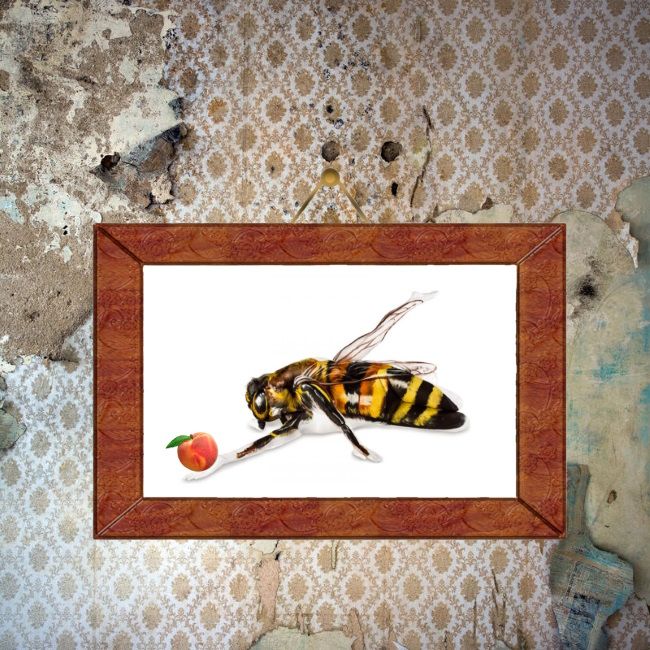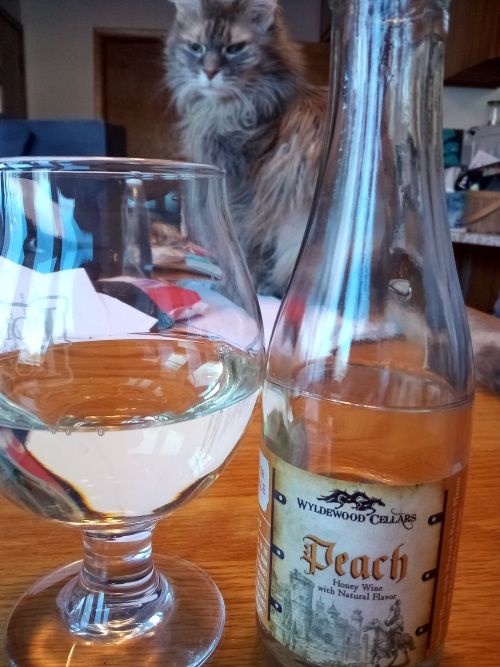Here we have my final review of a Wyldewood Cellars mead. For now. While I bought a variety 4-pack, the bottle of raspberry mead ended up at a friend's house.
I was listening to a podcast earlier today and the host remarked that the pigs my medieval European ancestors kept looked different from the ones we have today. It made me wonder if peaches are in a similar predicament. Apparently they are. Thought to have originated in China, they were in Mediterranean regions by the 4th century B.C.E. and spread from there. It seems the Spanish brought them over to these parts in the late 16th century.
It says here that peaches can have white or yellow flesh but that the latter are a product of the second half of the 19th century. I have also learned about peach stones. If the flesh adheres to it, it's called a clingstone. But, if the flesh is easily removed, it's called a freestone.
As I was reading that there are a couple thousand plus varieties of peaches, I thought about how we (i.e. - average American supermarket denizens) are presented and familiar with multiple varieties of apples but not so with peaches. Sure, we may not recall which variety of apple is best for baking, canning, or eating raw, but we are accustomed to seeing green ones and red ones; apple shaped ones and shorter, rounder ones that are shaped more like tomatoes. But, generally speaking, when we go to the store, a peach is a peach is a peach. We just hope the flesh isn't mealy, which, I just learned, happens when the fruit's pectin isn't allowed to breakdown due to cold storage.
Here is a sampling of peach varieties.
We have the Doughnut peach which is a bit flattened and its stem area is a depression that gives the appearance of a doughnut hole. Then we have the Brazilian Babcock variety that is missing the iconic fuzz. Indiana Jones' favorite peach is surely the Melting Flesh. I guess it take the freestone concept to the next level. There is also a Madison peach which is hardy enough for Wisconsin weather.
Lastly, I'll note that peaches taste like peaches because of compounds called lactones. It appears that gamma-decalactones are the main culprit as they taste like, er...um, peaches.
I guess Wyldewood used white-fleshed peaches because this peach mead looked like water. Actually, this mead is a blend of their sweet mead and peach wine so I suppose it's more correct to say that their wine must have been made with white-fleshed peaches. But shouldn't the mead have been yellow? There might have been the barest hint of yellow here but really, it looked colorless. It was also clear and unfizzed. While minimalism ruled the visual aspect, the olfactory one was much less ascetic as the mead smelled very sweet with the honey being floral and aided by a bit of earthiness. The peach was in the back somewhere.
As with the other Wydlewood meads I've tasted, this was very sweet and very smooth. The earthy-vanilla aspect of the honey seemed more prominent to my tongue. Just like their other meads, this stuff is 12% A.B.V. and there was some boozy heat to be tasted. The peach was mild, at first, but became much fuller as the mead warmed. The fruity/honey sweetness lingered when I swallowed but some gentle tannins eventually came through bringing a mild dryness that made for a nice contrast.
Another tasty wine from the folks at Wyldewood. Sweet but not like drinking Libby's Peach Nectar. I appreciated how the peach never totally obscured the honey. The ratio of these 2 flavors varied with temperature, but I could always taste both. A fine lactone-laced mead.
Junk food pairing: I recommend white peach & jasmine potato chips to accompany this mead. The jasmine adds a nice floral taste to the proceedings while the salt contrasts with sweetness nicely and enhances the flavors all around.


No comments:
Post a Comment